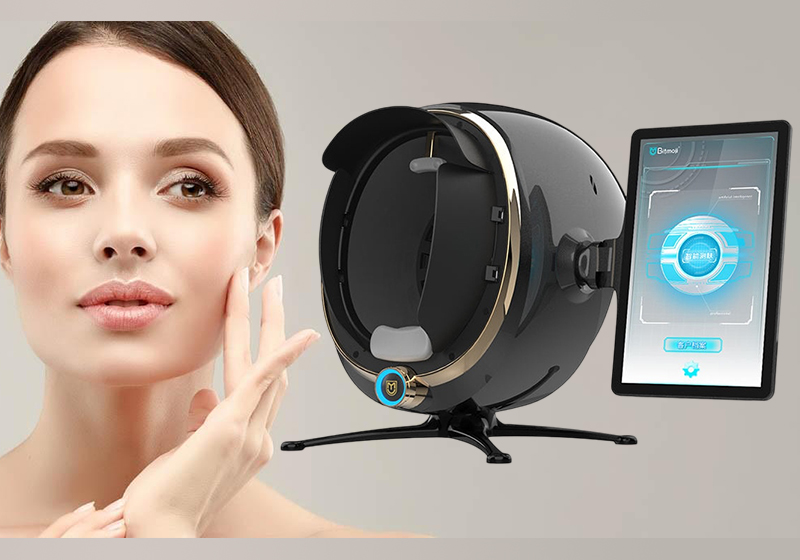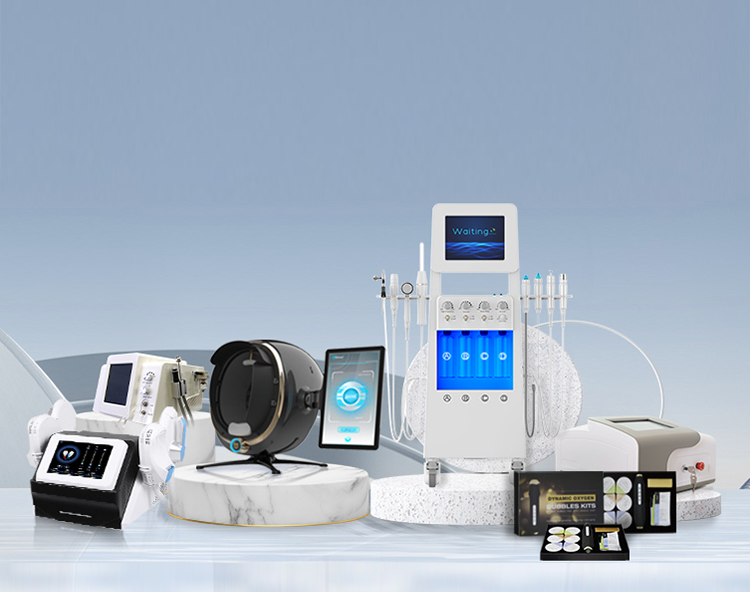What Does A Skin Analysis Machine Do?
A skin analysis machine is a specialized device, often using advanced imaging and sensing technologies, to objectively assess the condition, structure, and health of the skin's surface and subsurface layers. Here's what it typically does:
-
Captures High-Resolution Images:
-
Takes detailed photographs of the face or body area under different light spectrums (visible light, UV light, polarized light, cross-polarized light).
-
UV light reveals sun damage, pigmentation issues, and bacteria (often appearing as fluorescent spots) not visible to the naked eye.
-
Polarized light reduces surface glare to show underlying redness, vascularity (broken capillaries), and inflammation.
-
Cross-polarized light highlights surface texture, wrinkles, and pores.
-
-
Analyzes Key Skin Parameters:
-
Pores: Size, quantity, and visibility.
-
Wrinkles & Fine Lines: Depth, length, and density, often mapped by area (e.g., forehead, crow's feet).
-
Texture: Smoothness or roughness, scarring.
-
Pigmentation (Brown Spots): Analysis of spots (sun spots, melasma, freckles), their size, intensity, and distribution. UV imaging is crucial here.
-
Redness & Vascularity: Measures areas of inflammation, rosacea, broken capillaries (telangiectasia), and general sensitivity.
-
Sebum (Oil) Levels: Some devices measure oil production on the skin's surface.
-
Hydration (Moisture Levels): Some devices use sensors (like capacitance) to measure water content in the superficial layers of the skin.
-
Bacterial Presence: UV light can highlight areas of bacterial proliferation (like P. acnes), often seen as orange fluorescence, indicating acne risk or condition.
-
-
Creates Visualizations & Reports:
-
Generates Composite Images: Combines images taken under different lights for a comprehensive view.
-
Maps Concerns: Overlays graphical maps onto the facial image, highlighting specific areas affected by wrinkles, pigmentation, pores, or redness with different colors.
-
Quantifies Data: Provides numerical scores or percentages for various parameters (e.g., "Wrinkle Score: 65%", "Hydration Level: 42%").
-
Compares Over Time: Stores results to track changes and measure the effectiveness of skincare treatments or products over subsequent visits.
-
3D Topography (Advanced Machines): Creates a detailed 3D model of the skin surface, allowing for precise measurement of wrinkle depth, volume loss, and contour changes.
-
-
Provides Objective Baseline & Treatment Guidance:
-
Identifies Concerns: Reveals issues the client may not be aware of (like early sun damage or dehydration).
-
Personalizes Recommendations: Provides objective data for skincare professionals (dermatologists, aestheticians) to tailor treatment plans (lasers, peels, facials, products) and product recommendations specifically to the individual's measured needs.
-
Tracks Progress: Offers quantifiable proof of improvement (or lack thereof) after treatments.
-
Educates Clients: Visual evidence helps clients understand their skin's condition and the rationale behind professional advice, increasing compliance.
-
Types of Machines:
-
Professional Systems: Used in clinics, spas, and dermatology offices. More powerful, offer multi-spectral imaging, detailed analysis, 3D mapping, and often integrated moisture/oil sensors.
-
Consumer Devices: Smaller handheld or mirror devices for home use. Generally simpler, focusing on basic imaging (often just visible light or UV) and app-based analysis, though capabilities are improving.
In essence: A skin analysis machine acts as a diagnostic tool, using technology to see beyond the surface, quantify skin features, and provide an objective, detailed assessment to guide effective skincare decisions and track results.


-400x400.jpg)
-400x400.jpg)
-400x400.jpg)
-400x400.jpg)
-400x400.jpg)